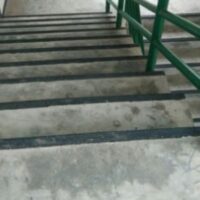Stairway Accidents in Rental Properties: Tenant vs. Landlord Responsibility

Stairway accidents in rental properties can result in serious injuries, and determining liability in these situations often hinges on understanding the distinct responsibilities of both tenants and landlords. In Las Vegas, as in many places, the division of responsibility is guided by local regulations, lease agreements, and general principles of premises liability law. At Mainor Ellis Injury Lawyers, we work with our clients to ensure they understand how responsibility is assigned and how it can affect liability in the event of an accident.
Landlord Responsibilities
The primary responsibility for maintaining rental properties in a safe condition typically falls on the landlord. This duty includes ensuring that all common areas, including stairways, are kept in good repair and are free from hazardous conditions. Key responsibilities include:
- Regular Maintenance: Landlords must regularly inspect and maintain stairways and related components such as handrails, step surfaces, and lighting. Failure to do so can lead to wear and tear that becomes dangerous.
- Prompt Repairs: When issues are identified, whether through routine inspections or tenant reports, landlords must address these problems promptly. Delays can lead to accidents and increase the landlord’s liability.
- Compliance with Building Codes: Stairways must comply with all relevant building codes and safety standards. This includes proper construction and upkeep of the stair structure, balustrades, handrails, and lighting.
Tenant Responsibilities
While landlords have broad responsibilities, tenants also play a crucial role in maintaining safe conditions and can be held liable under certain circumstances. Tenant responsibilities generally include:
- Reporting Hazards: Tenants must promptly report any hazardous conditions they cannot fix themselves, such as loose handrails or broken steps, to the landlord. Failure to report known dangers can potentially shift some liability to the tenant if an accident occurs.
- Reasonable Use: Tenants are expected to use stairways and other parts of the property reasonably. This means avoiding actions that could foreseeably damage the property or create hazardous conditions, such as leaving obstacles on stairways.
- Guest Safety: Tenants might also be held partly responsible for accidents involving their guests, especially if the tenant was aware of a hazardous condition and did not warn the guest.
Implications for Liability
When a stairway accident occurs in a rental property, determining liability involves assessing whether the landlord or the tenant breached their respective duties. If a landlord neglected to repair a reported hazard, or if the stairway was in violation of safety codes, the landlord could be held liable for resulting injuries. Conversely, if a tenant’s negligence—such as failing to report a loose railing or leaving personal items on the stairs—contributed to the accident, they could be held partially or fully liable.
In some cases, both parties might share responsibility. Nevada follows a comparative negligence rule, which means that if both the landlord and tenant are found to be at fault, the court will assign a percentage of blame to each party. Compensation awarded to the injured party will be reduced by their percentage of fault.
Schedule a Consultation Today
For both tenants and landlords in Las Vegas, understanding and adhering to their responsibilities is key to preventing stairway accidents and protecting themselves from liability. If you or someone you know has been involved in a stairway accident in a rental property, consult with our skilled Las Vegas stairway accident personal injury lawyers at Mainor Ellis Injury Lawyers, can provide guidance on how to proceed based on the specifics of the situation.
Source:
leg.state.nv.us/nrs/nrs-118a.html
